Strength training can benefit divers, who need strength to wear and transport heavy gear. Other benefits include greater bone density, increased metabolism, and cardiovascular strength.
The movements below incorporate core stabilization to ensure proper strength development and target joint stabilizers to improve joint health. Try to complete three sets of eight to 12 repetitions of each exercise before transitioning to the next exercise. Some training is always better than none, and your body will benefit from even one set of each exercise.
Goblet Squat
1. Begin with your feet slightly wider than shoulder width, toes pointing out slightly, and chest up while holding a dumbbell or kettlebell in front of your chest.
2. Sit your hips back while bending your knees.
3. Keep your knees aligned with your toes and heels in contact with the floor.
4. Squat to 90 degrees.
5. Return to standing position by simultaneously pushing through your heels and extending your hips.
Tip: Keep your eyes slightly upward, and push your weight through your heels.
Modification: Lower the squat to 45 degrees instead of 90 degrees.
Challenge: Increase the depth of your squat until you feel a change in your hip position.
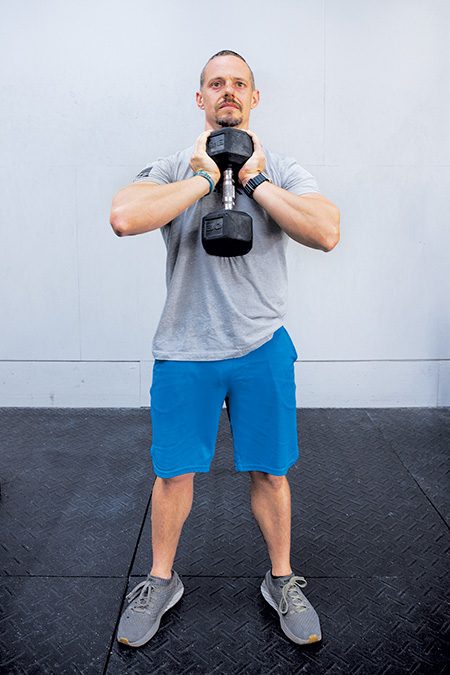
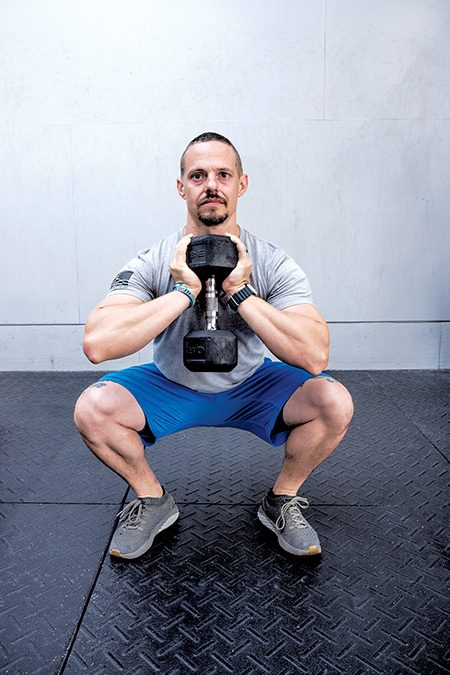
Unilateral Dumbbell Bench Press
1. Lie supine on a bench with five points of contact, keeping your feet flat on the floor and your head, shoulders, and butt in contact with the bench.
2. Begin with a single dumbbell at chest level.
3. Press the dumbbell up, maintaining an approximately 45-degree angle at your armpit.
4. Press the dumbbell until your elbow is fully extended but not locked and the dumbbell is stacked directly over your shoulder (actively stabilizing your shoulder).
5. Lower the weight to your chest, and repeat eight to 12 times on one side before switching to the opposite side to complete one set.
Tip: Maintain full contact of your back with the bench and feet with the floor.
Modification: Reduce the weight as needed.
Challenge: Increase the weight.
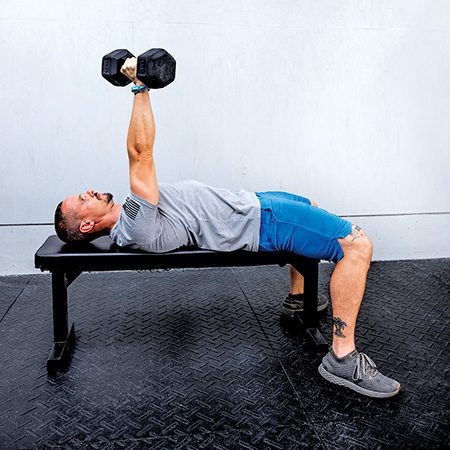

Dumbbell Squat Press
1. Begin with the proper squat stance described earlier while holding two dumbbells in a front rack position.
2. Perform a squat while holding the dumbbells at shoulder level.
3. As you come up from the squat, extend your arms straight overhead, moving your elbows and knees in unison.
4. Fully extend your knees, hips, and arms while maintaining a neutral grip (palms facing each other) to protect your shoulders.
5. Lower the weights to shoulder level, and repeat.
Tip: Make sure your heels stay in contact with the floor, and keep the weights stacked over your shoulder, maintaining an upright position.
Modification: Do the two movements independently.
Challenge: Lower the weight with controlled movement at the same time as you squat.
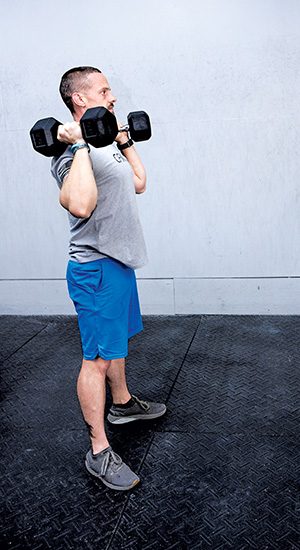
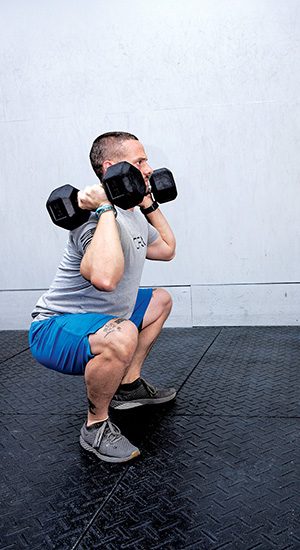
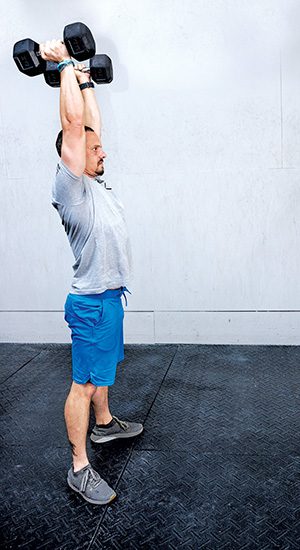
Alternating Renegade Rows
1. Begin in a prone position while gripping two dumbbells — hexagonal weights work best to avoid rolling — directly under your shoulders.
2. Push up into a plank position on your toes, with your feet about shoulder-width apart, your hands under your shoulders, and your arms and back straight.
3. Pull one weight to your chest, keeping your elbow close to your body. Do not rotate your torso.
4. Slowly lower the weight to the starting position while maintaining the plank.
5. Repeat with the opposite hand.
Tip: Maintain a tight core and flat back, ensuring your middle does not sag.
Modification: Do the plank on your knees instead of your toes.
Challenge: Bring your feet closer together.
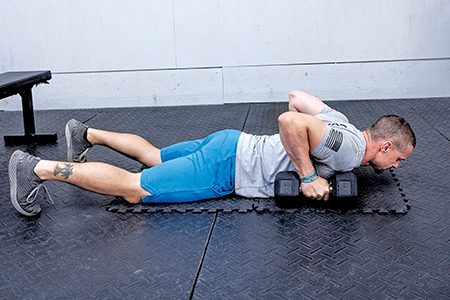

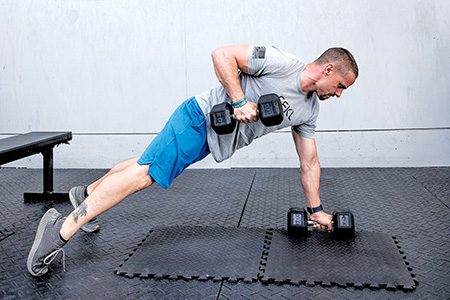
Front-Loaded Split Squat
1. Begin in a split-squat stance with your rear leg on a bench and a dumbbell or kettlebell in a front goblet position.
2. Your front foot should be just in front of your body and facing forward.
3. Lower your hips until your front knee is 90 degrees while maintaining an upright position. Keep your knee in line with your foot and your heel on the ground.
4. Push up through the front foot, and extend your hips to return to standing.
Tip: Focus on balance, and keep your upper body upright. Don’t look down or your body will follow.
Modification: Lower the squat to only 45 degrees.
Challenge: Increase the weight once you feel stable.
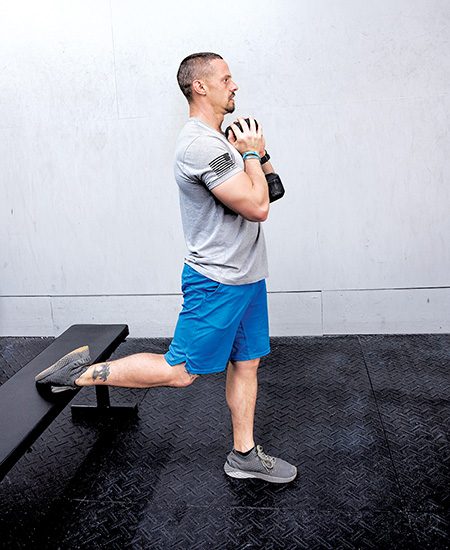
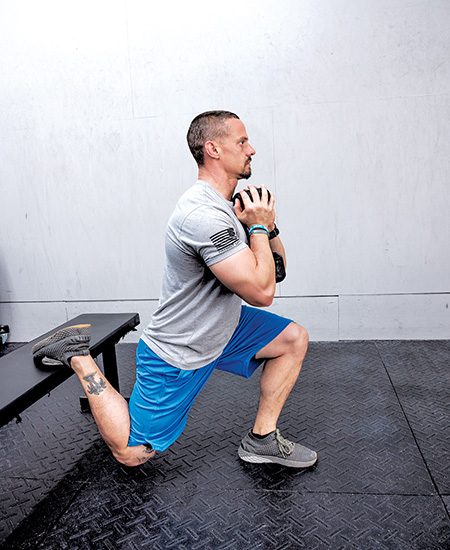
Romanian DeadLift
1. Stand facing a barbell with your feet slightly wider than shoulder width.
2. Bend your legs, and drop your hips to reach the bar.
3. Grasp the bar at shoulder width in an overhand grip position (palms facing down), and stand straight up by extending your hips while maintaining a flat back.
4. Lower the bar along your thighs, pushing back your hips and keeping your back straight and your chest up until the bar is just below your knees. You should feel your hamstrings stretching.
5. Push your hips forward, squeezing your hamstrings and glutes, to raise the bar as you return to standing.
Tip: Keep your legs straight, but don’t lock your knees. Focus on hinging at the hip and keeping your back flat.
Modification: Do only a partial bend at your hips.
Challenge: Try balancing on one foot at a time once you have mastered the full range of motion.

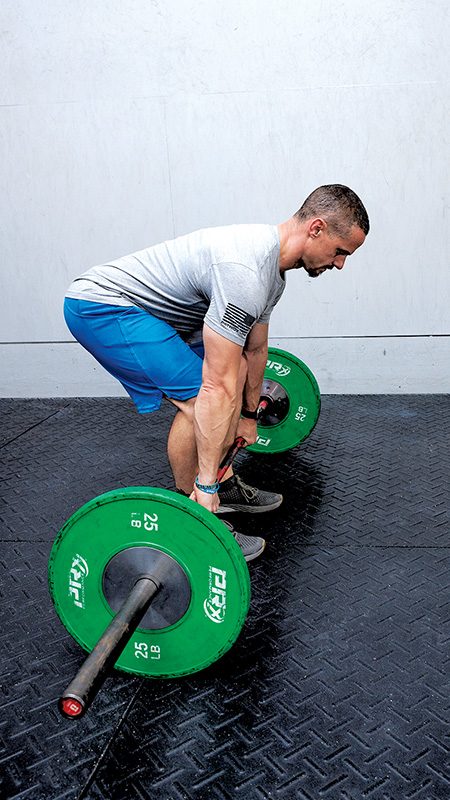
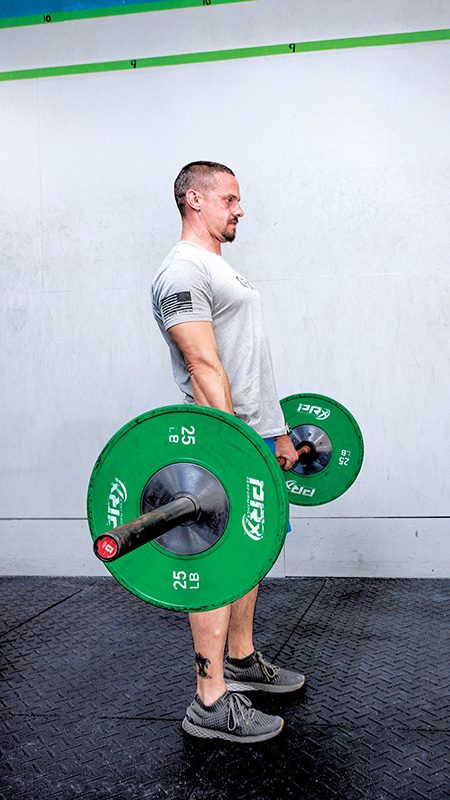
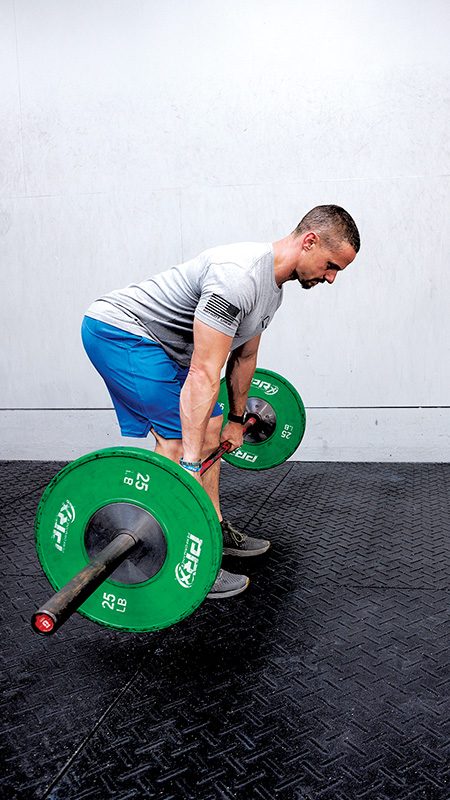
Dumbbell Snatch
1. Begin squatting with a single dumbbell between your feet and perpendicular.
2. Use proper squat technique to grasp the dumbbell with an overhand grip.
3. Stand forcefully while pulling the dumbbell upward in an upright rowing motion. Keep your elbow high and the dumbbell close to your body.
4. Once the dumbbell reaches approximately chest level, quickly flip the dumbbell and in one smooth motion extend it overhead as you squat again.
5. Stand up from the squat, keeping the dumbbell raised over your shoulder.
6. Slowly lower the dumbbell to your shoulder, return it to the floor, and repeat.
Tip: Maintain a fluid movement with the dumbbell moving upward in a straight line.
Modification: Use a lighter weight.
Challenge: Increase the weight once the movement is fluid.
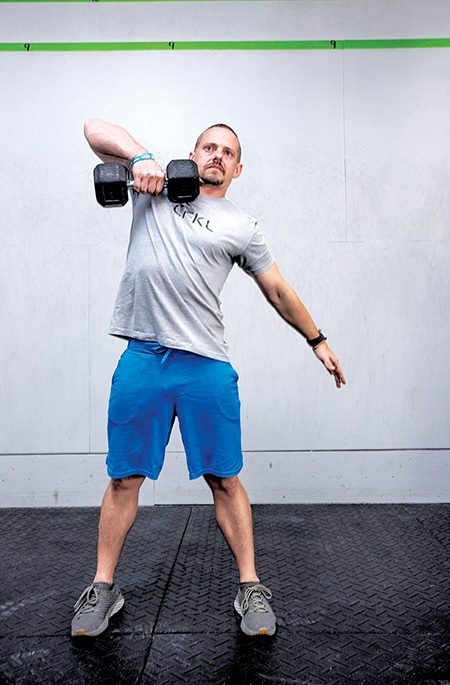

© Alert Diver — Q2 2024